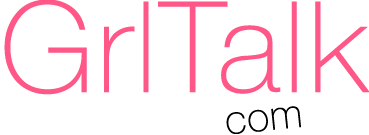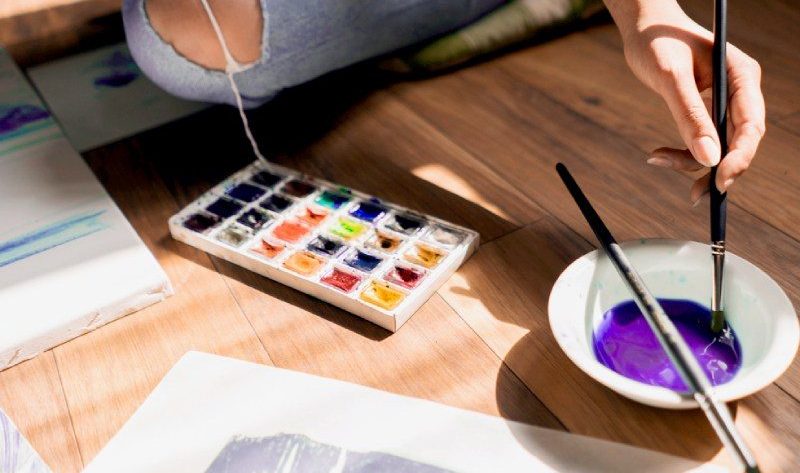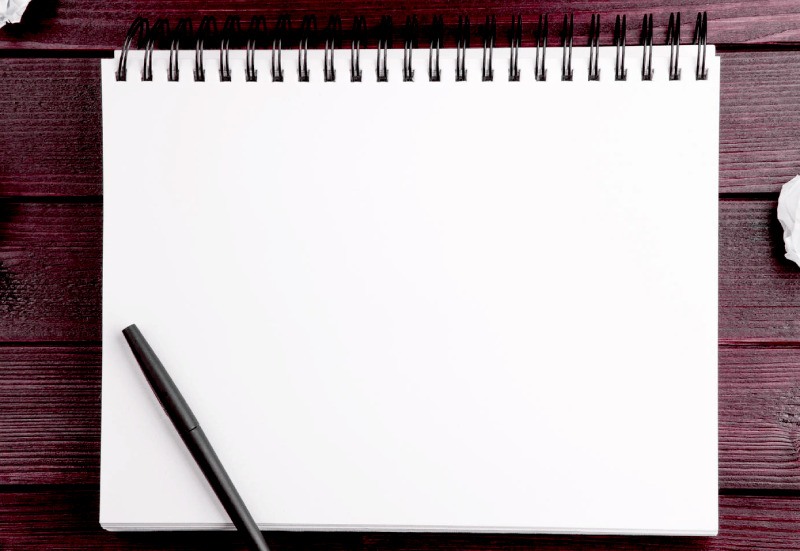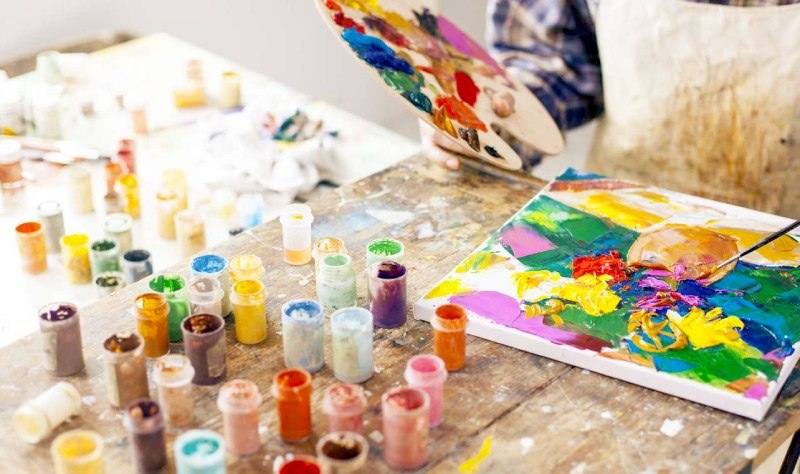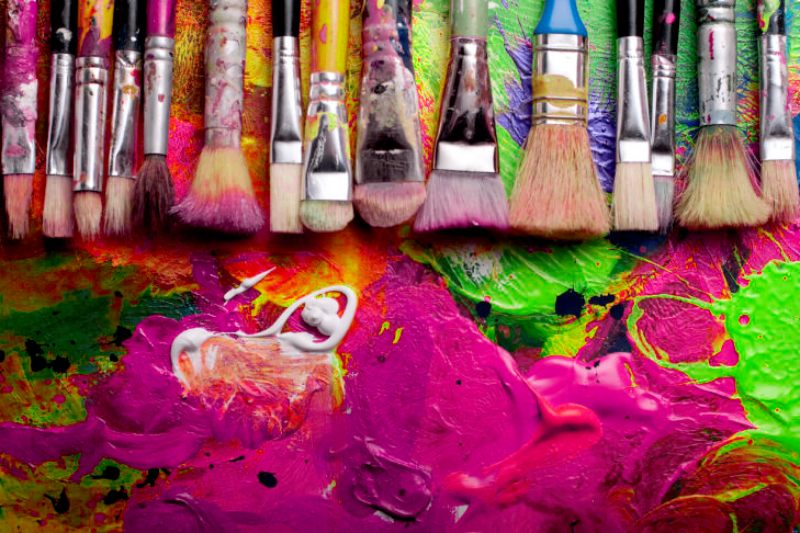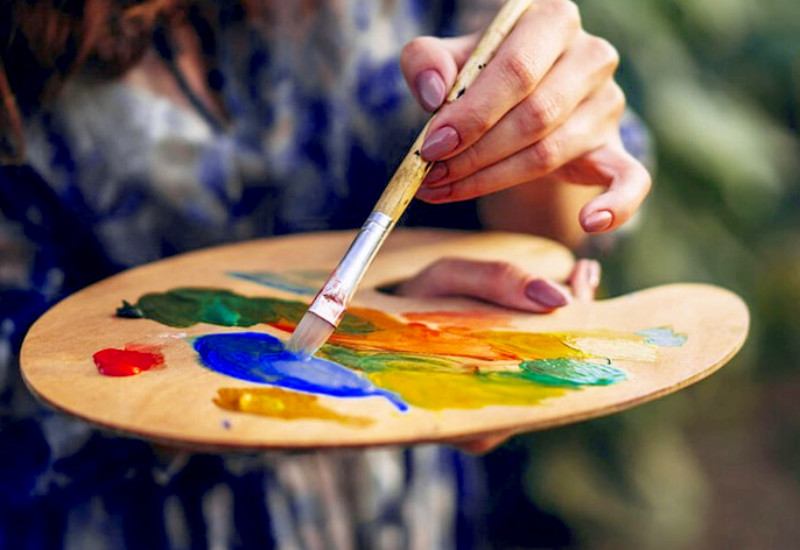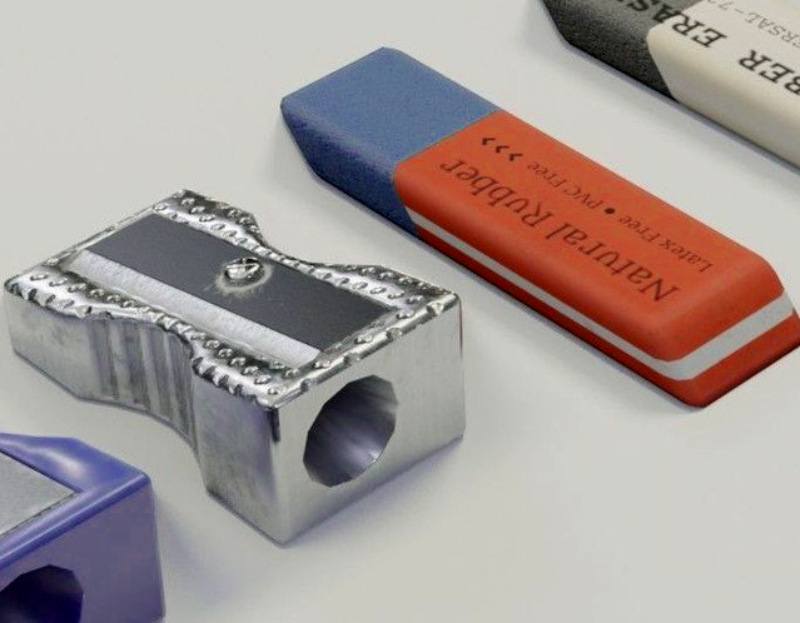Maybe you love painting as a hobby, or you’ve never tried getting into it, but you always wanted to try and create your own masterpiece. It’s never too late to follow your passion, so get ready to start creating beauty on paper.
Here we will tell you everything you will need to collect in your art kit to be able to create unique art.
Essential Art Supplies to Have for Beginners
Going into the art store could be frustrating, with the huge variety of materials. You might be wondering “What is this weird spread-out brush for?” or “How to choose between all the different types of sketchbooks?”
Well, don’t worry, because you will only need a few things for a complete artist’s set for beginners.
A Set of Quality Pencils
A pencil is an artist’s best friend. If you can master drawing with a pencil, you would be able to move on to any other type of material.
A set of pencils will be necessary for practicing and making sketches before painting.
A complete set of pencils for beginners could include a few basic pencils of such hardness:
- HB – for light sketching;
- B – transition;
- 2B – general sketching;
- 4B or 6B – dark areas.
The most often used pencil type for general sketching really is 2b, and the best part is that it is easy to erase, so you won’t have to worry about making a mistake.
A Sketchbook: How to Choose the Right one
That goes without saying, but as a beginner artist, you will need a surface to draw on, and it’s best to get a good sketchbook. A4 copy paper is good for practicing, but you will need somewhere to draw your better pieces, and it’s best if you can carry it around with you.
A good sketchbook size for beginners is 9×12 inches, or 22.9 x 30.5 cm.
The paperweight is also important, so if you will be drawing with pencils, 50 – 65 lb is a good paperweight.
For watercolors and acrylics, you will need a heavier type of paper with a specific structure.
A Set of Acrylics
Although the art masters used oil paint, oil painting is a very complicated process for beginners. Acrylic paint on the other hand is quite easy to use and it very much resembles oil paint, especially in comparison to other paints like tempera and gouache.
You don’t really need to empty your pockets to get paints.
In the beginning, you can do with only these 5 colors:
- White;
- Black;
- Red;
- Blue;
- Yellow.
Red, blue, and yellow are the primary colors and by mixing them in different proportions you can get any other color you need. Use white or black to get lighter and darker nuances and now you have a complete palette.
Watercolors
Watercolor is another type of paint that is perfect both for beginners and professionals. It is quite easy to use, but it forms beautiful shapes and it brings a lot of satisfaction.
A set of 22 aquarelle nuances is perfect for beginners but even professional artists could make quite good use of it.
Brushes: The Most Important Ones
There are really more types of brushes than you even imagine, but as a beginner, you actually only need between 3-5 brushes for painting.
Here are the most important brushes you will need for acrylic paint:
- A flat wash brush (size 1″) – backgrounds;
- A small liner brush – details;
- A filbert (size 2, 4, or 6) – general painting.
- A round brush (8, 10, or 14);
- A flat brush (size 3/4).
The last two brushes are mainly necessary for watercolor, so if you will not be using that type of paint, you can go without them.
A Palette
Although you could use cardboard or even a plate for a palette, it will feel much better and more inspiring if you got an actual artist’s palette, and it will be also much more convenient.
There are different types of palettes for watercolors and for acrylics. There are some quite convenient and affordable plastic palettes that work well both for acrylics and watercolors, but you will have to make sure you scrape the remains of the acrylic paint after a painting session.
It’s best to get separate palettes for the different types of paints you will be using for maximum comfort.
Erasers and Sharpeners
Some art masters say that the eraser is not for deleting, but for drawing too. In a way, the way you are using the eraser has an important effect on the artwork.
As a beginner, you will be needing a hard eraser for deleting general mistakes, but if you want to take it a step further, you will also need kneaded erases for shading.
A good sharpener is also necessary, and it’s a great way for beginners to sharpen pencils, as opposed to sharpening them with a dummy knife.
